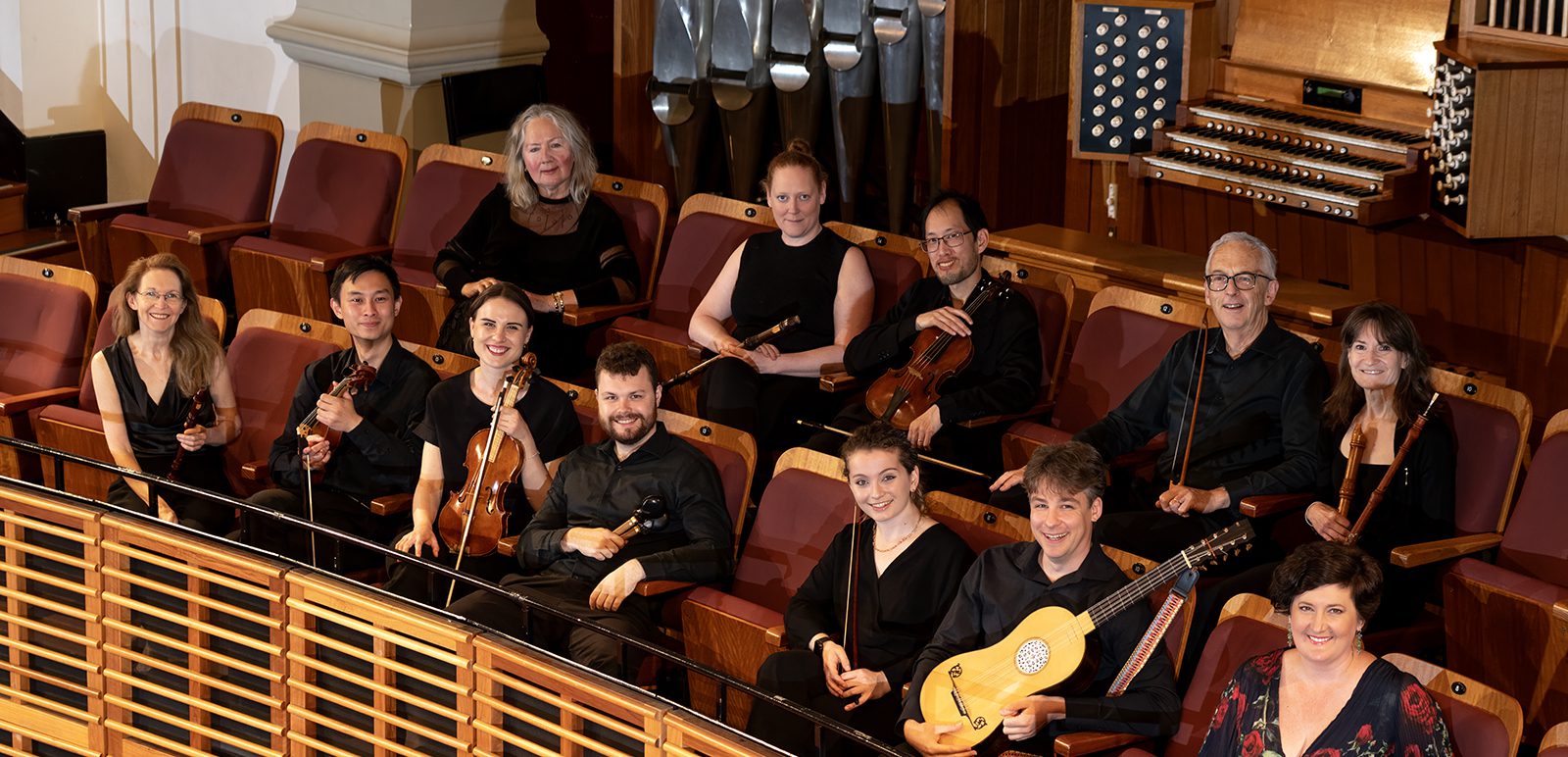Showcasing the diversity of the early to late Baroque.
When Frescobaldi finished his collection of liturgical organ music in 1635, he gave it the most splendid title – Fiori musicali. Every Salut! Baroque concert program is a veritable fiori musicali. The pieces are always well-curated, and feature the best the Baroque has to offer, but without being confined to the late Baroque and without being confined to the baroque of Western Europe.
The capstone concert of Salut Baroque’s thirtieth concert year was no exception. It started with Carlo Tessarini’s Overture in D major, Op 4 from his La Stravaganza. It was typically Italianate in style, and had hints of Corelli with rustic interludes. The highlight was a series of duets between Sarah Papadopoulos on baroque violin and Brad Tham on Baroque viola. Parts of the Largo sempre piano look forward to the Credete al dolore from Handel’s Alcina.
The guest soprano, Anna Fraser, joined for Handel’s Eternal Source of Light Divine. It is a baroque rule that wherever the words “eternal” or “ewig” are used in a cantata, we have prolonged notes. Jane Downer’s oboe performance was a highlight, mastering slight modulations in pitch on prolonged notes to give an impression of the human voice.
Sally Melhuish and Alana Blackburn then join on recorders, together with George Wills on an imposing theorbo, for Dowland’s Can She Excuse My Wrongs. The texts of his love songs have an almost syllogistic quality, as most Renaissance works did, with references to the twin muses of Reason and Justice. But Fraser accidentally had the lovestruck narrator “expire” rather than “aspire”. The tantalising bridges in “wilt thou be thus abused still” and “better a thousand times to die” were sung with great deftness and expectation.
The next composer had the benefit of an exquisite surname – Schieferdecker. His Ouverture-Suite No 13 in C minor from his Musicalische Concert showed the fascination of most German courts at that time with the French overture style. Jack Peggie punctuated the piece, Lullyesque, with snare drums, and the B-section of the overture was a quick change. Downer on oboe took the lead in the Gavotte and John Ma took the lead in the fiery Bouree with feverish pace but astounding accuracy. The same may be said of his performance in the “marches” in Marin Marais’ Marche pour le Matelots. The metre-shift in the middle was a moment to behold. It was the archetype of toe-tapping French music.
Purcell’s The Unhappy Penitent has parts that recall his earlier works, such as the catchy If love’s a sweet passion from his Fairy Queen. It was rounded with a chaconne (or what Purcell would have preferred to call a “ground”). A ground is an opportunity every continuo player relishes – especially a harpsichordist. Monika Kornel gave tasteful embellishments on harpsichord, that allowed the dramatic pace of the chaconne to unfurl over time.
Then followed a succession of obscure Iberian music from the 17th century. One had a strange metre, another a curious text, and the other a catchy tune with castanets and all. It would not have been Spanish music without some reference to folly.
So of course Bach’s more sombre Zion hort die Wachter singen brought with it a sea change. With its very Lutheran mix of hope and admonition, it exhorts us to remain steadfast in faith. This it does with a robust but winding motif which repeats itself throughout, and an equally robust cantus firmus containing the hymn, sung by Fraser.
